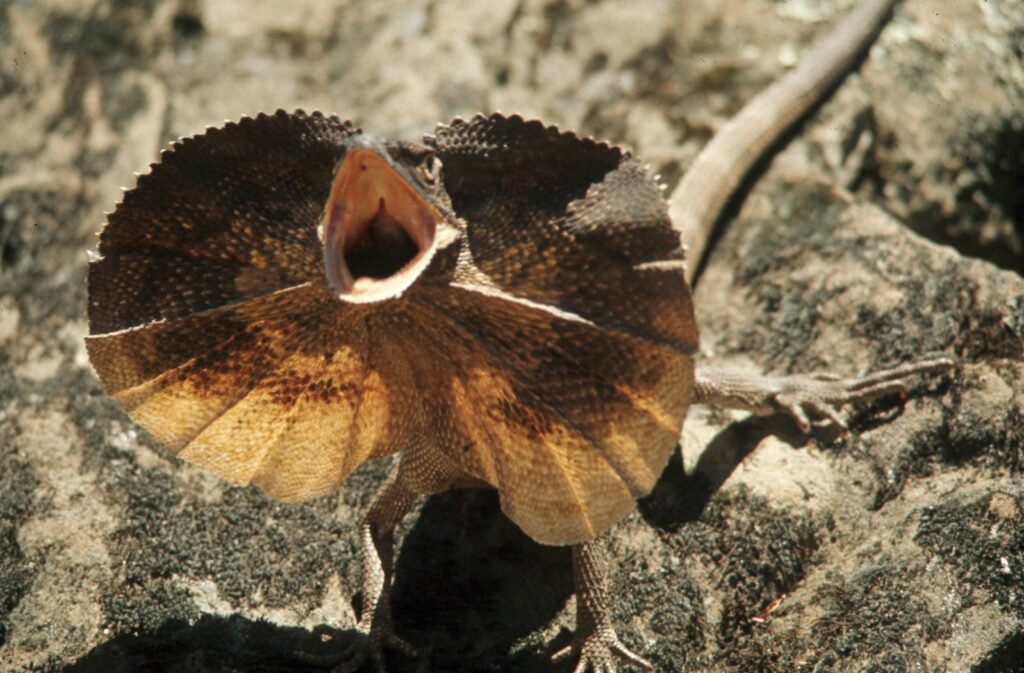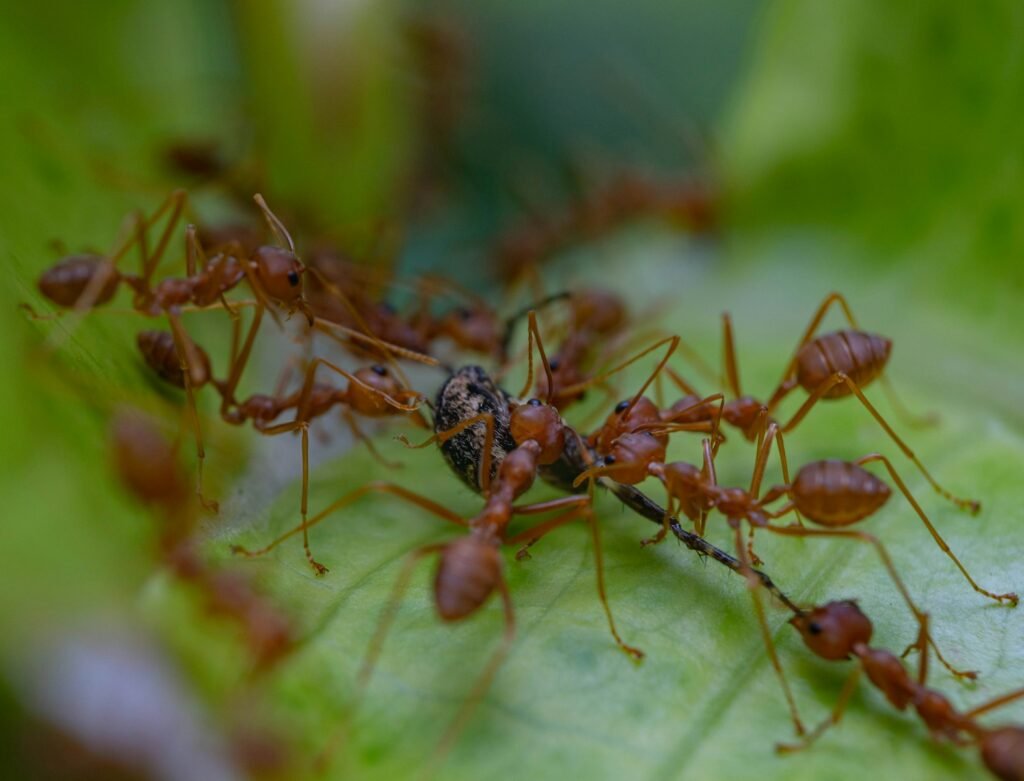A flash of copper leaps from the trunk, a wheel of skin unfurls, and for a heartbeat the bush seems to widen its eyes. The frilled‑neck lizard, an animal famous for turning its neck into a living parasol, is more than a viral clip from the outback – it is a small marvel of biomechanics and evolutionary storytelling. Scientists are revisiting this species with fresh tools, asking how a thin membrane can stop a predator and why a tree-dwelling reptile switches to a two‑legged sprint. Beneath the spectacle lies a puzzle that links anatomy to behavior, climate to survival, and myth to measured data. If we read the clues carefully, this flamboyant runner has a lot to say about how life negotiates danger in plain sight.
The Hidden Clues

I remember my first field encounter near Katherine, Northern Territory: a slender body hugging a paperbark trunk, still as bark until it wasn’t. The frill flared and the lizard rose to its hind legs, transforming from branch ornament to bold poster in an instant. That fan is a deimatic display – an abrupt visual shout designed to startle, confuse, and buy seconds of safety. Colors in the frill can range from warm oranges to dusky browns, often edged by contrasting patterns that accentuate size when backlit by the sun. The lizard typically pairs the display with an open mouth and a forward lean, a package that amplifies the illusion of being larger than it is. What looks theatrical is carefully economical: using an eye‑catching membrane costs far less than a fight.
How the Frill Works
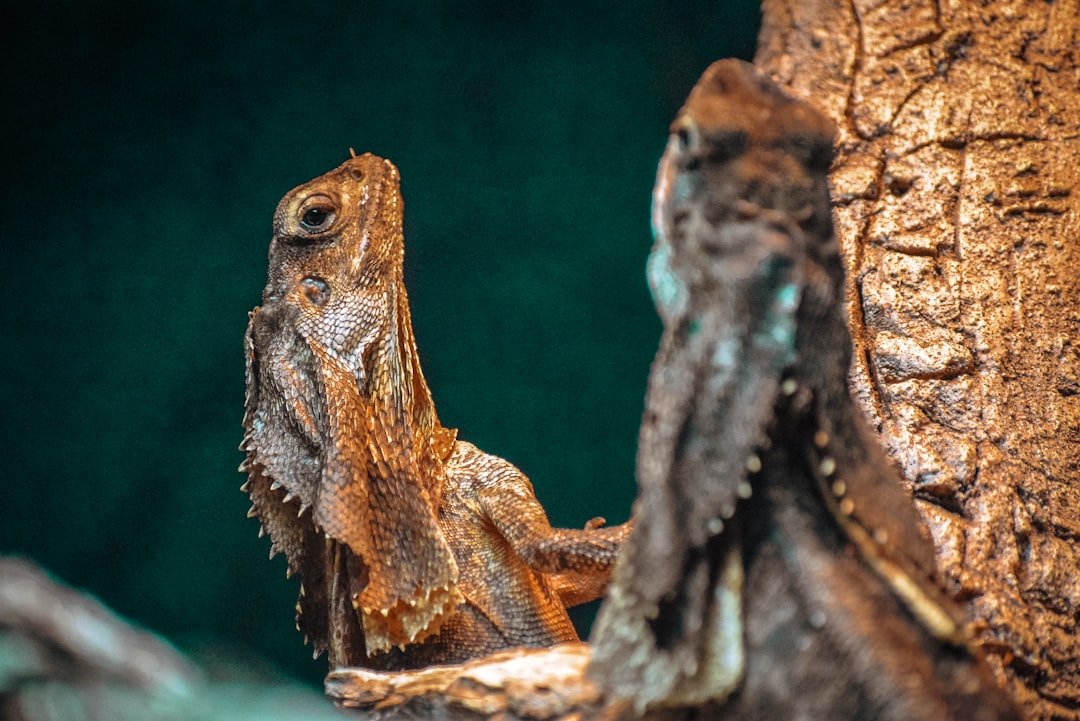
The frill is built on a framework of elongated bony and cartilaginous supports linked to the hyoid apparatus in the throat. When muscles contract – often in sync with opening the jaws – the supports swing outward like flexible struts, lifting a broad ring of skin into a stiffened disc. Blood vessels within the membrane can enhance color and temperature exchange, while micro‑folds help the frill collapse quickly when the moment passes.
This pop‑open architecture means the lizard can go from cryptic to conspicuous in a snap, then return to camouflage without lingering costs. Because the frill is anchored to feeding structures, display and bite readiness are coupled – if bluffing fails, the animal is already primed to defend itself. The design is equal parts umbrella, flag, and shield, tuned by natural selection for split‑second decisions.
Sprint Mode: From Four Feet to Two
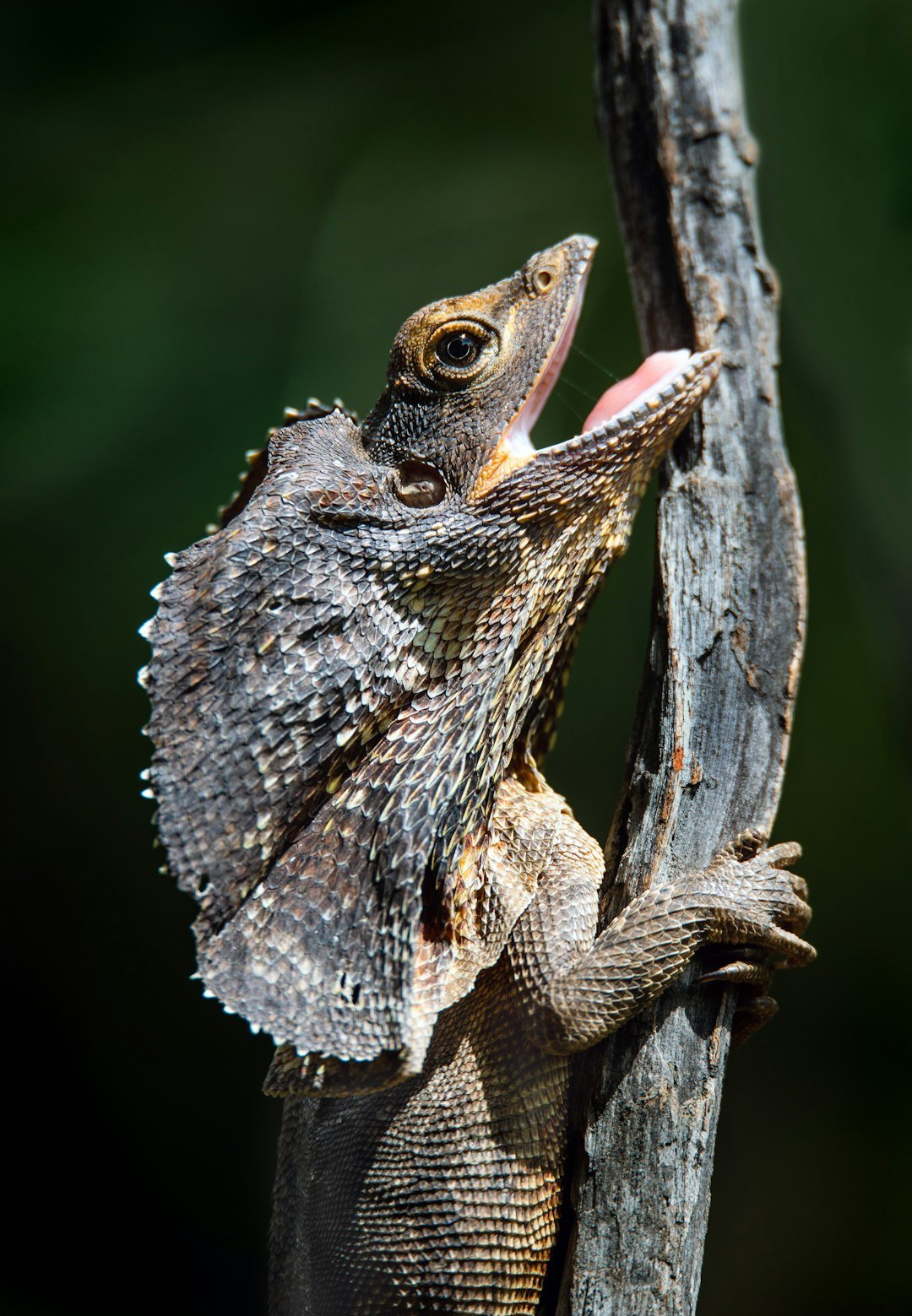
Most of the day, the frilled‑neck lizard is an arboreal insect-hunter that scurries on all fours along trunks and branches. Under threat on open ground, it shifts gears into a bipedal sprint, lifting the front limbs and using its long tail as a counterbalance. High‑speed video shows that the center of mass moves slightly forward as strides lengthen, stabilizing the torso while the legs cycle in quick arcs. Running this way frees the forelimbs for maneuvering and display, so the frill and open mouth can stay front‑and‑center as the animal retreats. The effect is uncanny, echoing the posture of much larger bipedal reptiles from deep time, though born here from very different pressures. Speed, exaggeration, and directionality merge into one survival tactic that looks dramatic because it is.
From Ancient Tools to Modern Science

Early naturalists sketched the lizard’s startling collar with awe, and the animal drifted into folklore and pop culture – sometimes embellished beyond recognition. Today, researchers bring a different toolkit: drone mapping of habitat mosaics, accelerometers that log micro‑bursts of motion, and thermal cameras that read surface temperatures across the frill. These methods reveal fine‑scale behavior we once guessed at – how wind, shade, and perch height influence decisions to display or run.
In northern Australia and southern New Guinea, population surveys now blend community reports with image recognition to flag hotspots and seasonal shifts. Even 3D models of skulls and hyoid bones, built from CT scans, are clarifying how frill mechanics vary with age and sex. The story is moving from sketches to datasets without losing the wonder that sparked those first drawings.
Why It Matters
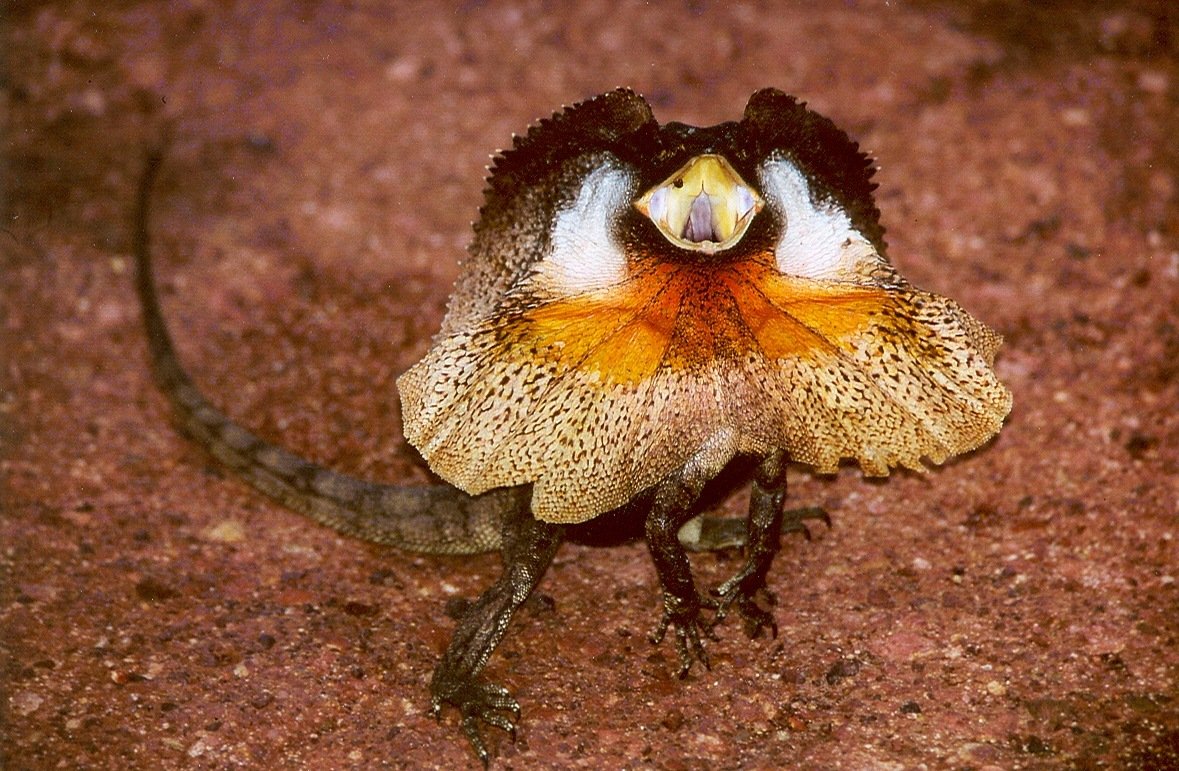
Understanding this species bridges key ideas in biology: how signals evolve, how bodies repurpose structures, and how behavior flexes with context. The frill is a living case study in honest bluffing – cheap to deploy, persuasive at distance, and still tied to real defensive capacity. Compared with static warning colors in many animals, the lizard’s display is switchable and directional, allowing fine control that can match the urgency of a threat.
Its bipedal escape shows how locomotion can be opportunistic, not locked into a single mode, offering parallels to other lineages that toggle gaits when it counts. In a world where survival often hinges on winning a few seconds, these solutions are the difference between being a meal and making it to the next tree. Studying them sharpens our ability to spot similar trade‑offs in species we rarely see.
Threats on the Horizon

The frilled‑neck lizard is still widely distributed across northern Australia and into southern New Guinea, but stability isn’t guaranteed. Altered fire regimes can thin the mid‑story and change prey communities, forcing more ground travel where risks rise. Expanding roads and peri‑urban sprawl carve gaps between trees, creating open corridors where sprinting becomes the only option.
Predators – both native and introduced – capitalize on these edges, and prolonged heat in the dry season can push smaller juveniles beyond their limits. Illegal collection and casual disturbance add pressure in a species that depends on staying cryptic until the last possible moment. Resilience here means maintaining the patchy, layered habitats that make the display-and-dash solution feasible in the first place.
The Future Landscape
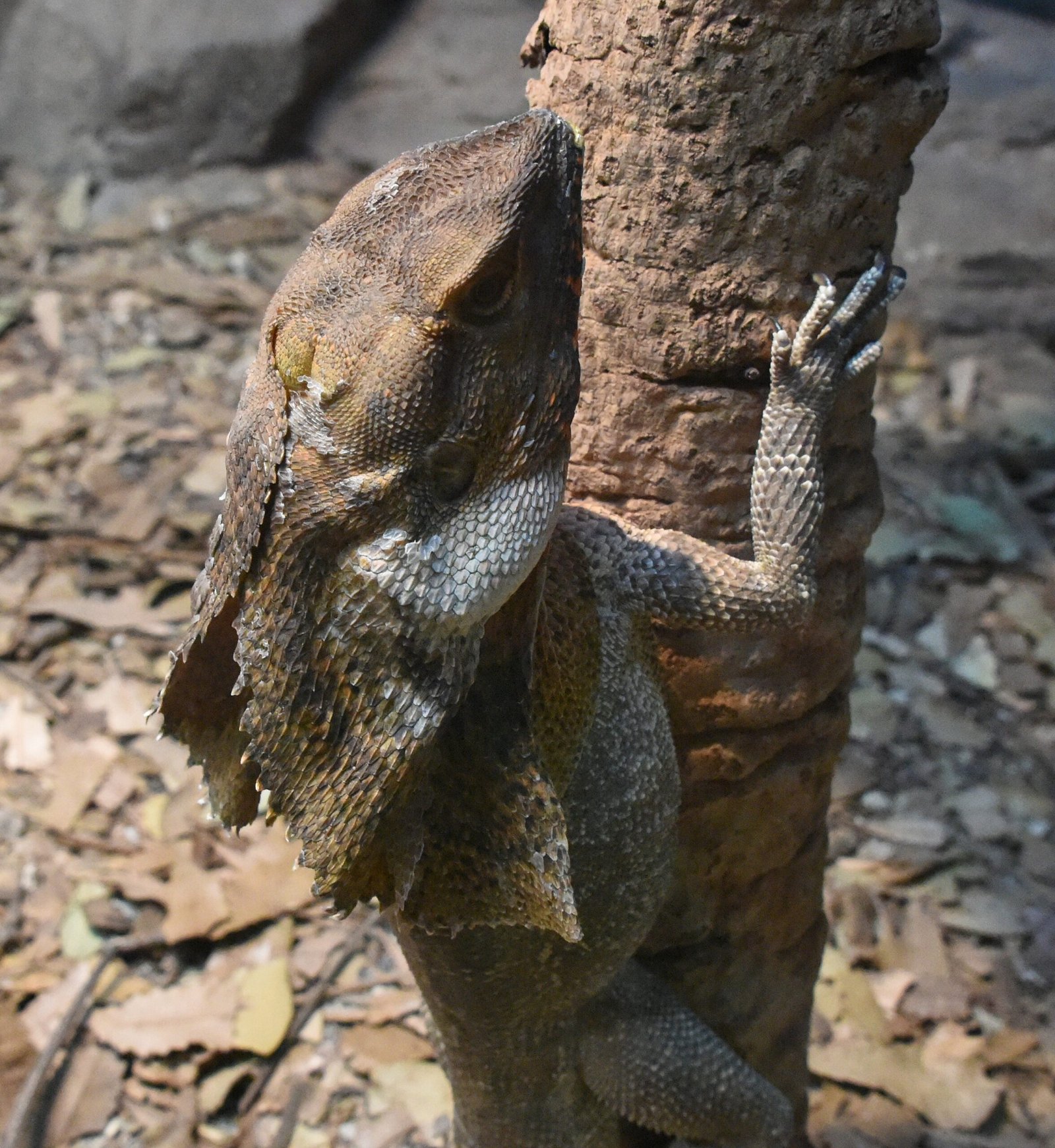
Next‑generation bio‑loggers small enough for a medium agamid will soon capture entire sequences from perch choice to sprint to recovery, revealing how often the frill truly changes outcomes. Environmental DNA from soil and puddles after monsoon rains could map presence without a single capture, filling gaps across remote savanna. Machine‑learning models trained on ranger and citizen photos will refine range estimates and detect subtle declines before they escalate.
Lab work is set to explore how frill micro‑structure influences airflow and heat exchange, with implications for materials science that mimic fast‑deployable shading. Even policy experiments – like managing fire timing to preserve mid‑canopy cover – can be measured against lizard responses in near‑real time. The species is poised to become a model for testing how rapid, low‑cost signals fare in a warming, fragmented world.
Conclusion
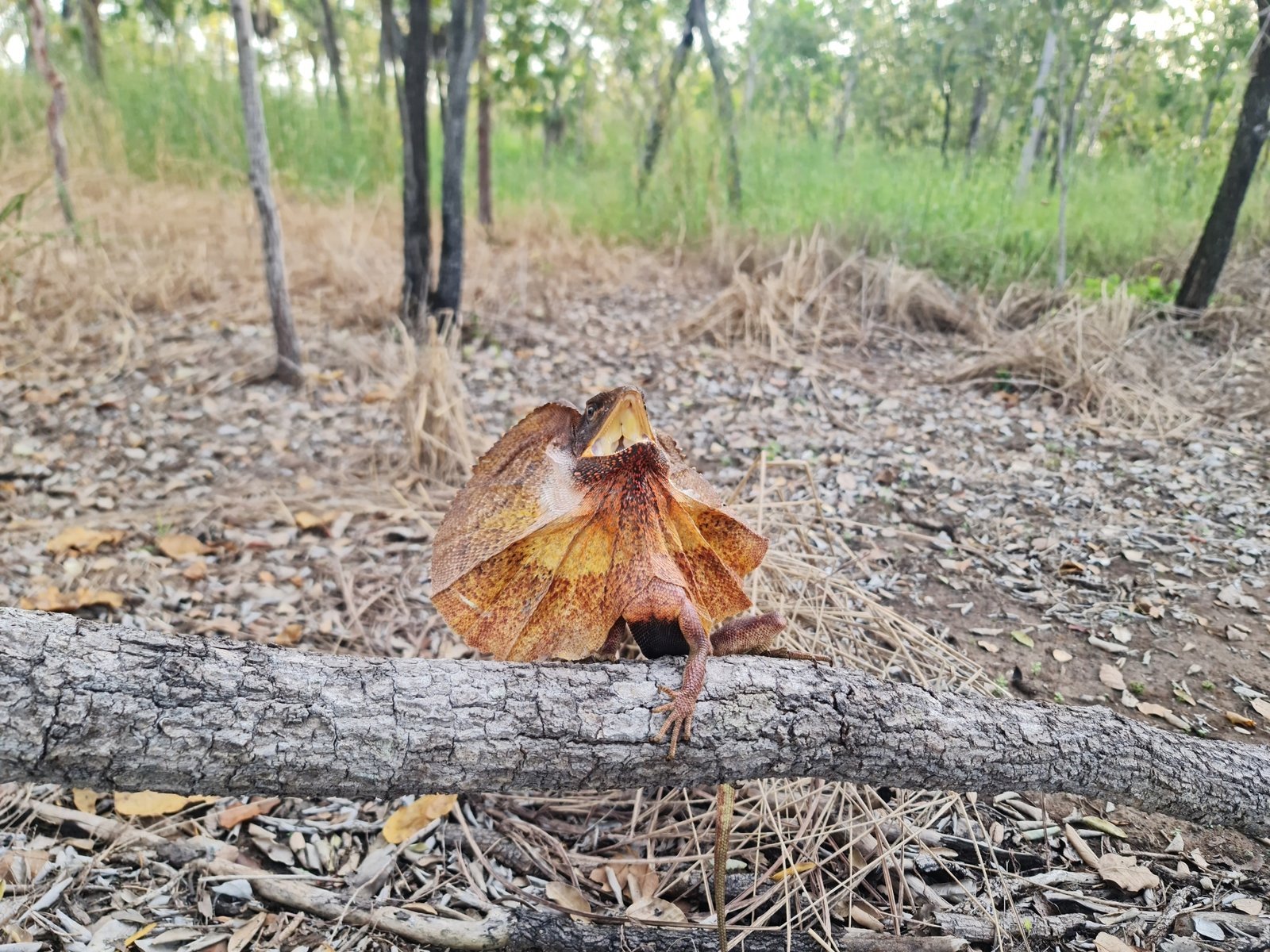
If you live or travel in northern Australia, keep dogs leashed near woodland edges and give basking reptiles space; the best photo is the one you didn’t chase. Support land managers and Indigenous ranger programs that maintain mosaic burning, because patchy habitat keeps options open for animals that split seconds matter for. If you enjoy wildlife art or crafts, favor creators who use photographs and field sketches ethically rather than encouraging staged displays.
Contribute to reputable citizen‑science platforms with time‑stamped, geotagged images; even one clear sighting can tighten models that guide conservation. And if the frilled‑neck lizard made you smile today, consider backing local museums or herpetology groups that turn curiosity into long‑term monitoring. Small, practical choices ripple outward, much like that sudden circle of color on a dusty track.

Suhail Ahmed is a passionate digital professional and nature enthusiast with over 8 years of experience in content strategy, SEO, web development, and digital operations. Alongside his freelance journey, Suhail actively contributes to nature and wildlife platforms like Discover Wildlife, where he channels his curiosity for the planet into engaging, educational storytelling.
With a strong background in managing digital ecosystems — from ecommerce stores and WordPress websites to social media and automation — Suhail merges technical precision with creative insight. His content reflects a rare balance: SEO-friendly yet deeply human, data-informed yet emotionally resonant.
Driven by a love for discovery and storytelling, Suhail believes in using digital platforms to amplify causes that matter — especially those protecting Earth’s biodiversity and inspiring sustainable living. Whether he’s managing online projects or crafting wildlife content, his goal remains the same: to inform, inspire, and leave a positive digital footprint.

